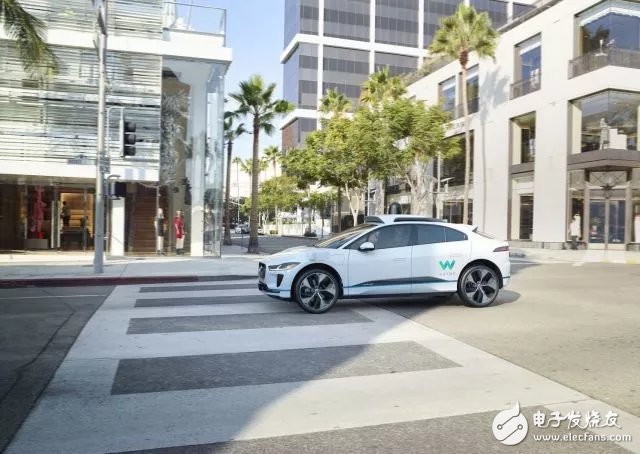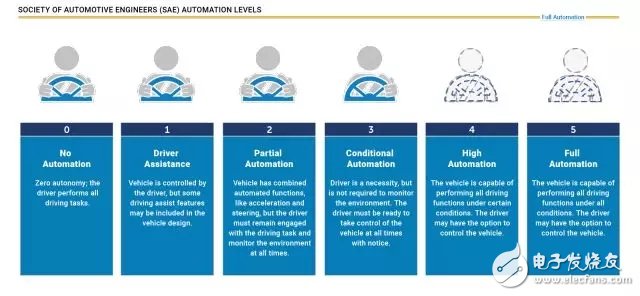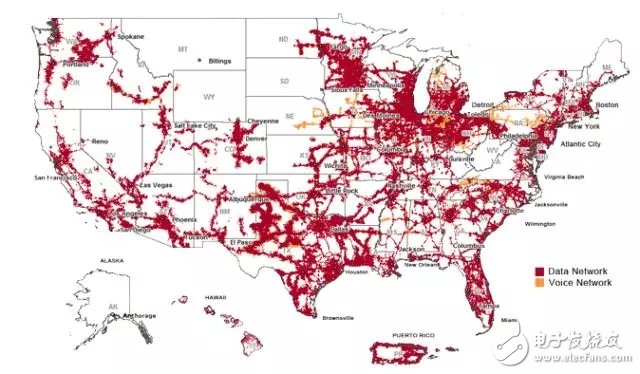Is the root of many problems an unreasonable autonomous driving classification system? If it needs to be changed, what should it be? There are numerous tragedies in the field of autonomous driving. And this is probably our illusion. Because in fact, every self-driving accident so far can find the time, place, and passage in the news. The combined number of them is not so large. Compared with the traffic accidents that occur on the road every day, this is only a drop in the ocean, but they are all Aroused great attention. People are very concerned about the cause of autonomous driving accidents, which affects whether the car is convicted or the driver is ultimately convicted, and the problem is mostly pointed out as a human error. More stringent driving experience and training experience requirements for drivers, as well as improvements in autonomous driving related technology can reduce the occurrence of such mistakes, but in addition to these, perhaps we have overlooked some problems that have not been solved from the beginning: The traditional classification rules for autonomous driving have certain drawbacks and irrationality. Based on this problem, the United States has proposed a new solution-that is, to reclassify the autonomous driving system. This is indeed a problem worthy of attention, so let's take a look at his point of view, GeekCar compiled as follows: In the field of autonomous driving, people are paying the price of their lives because of technical limitations and vague terms. I think that the language of autonomous vehicles is inherently problematic, and the SAE level should also be redefined. This is not to say that the engineers who invented the SAE level made a mistake in the technical definition, but that after media citations, manufacturer use, investor considerations, and marketers use these terms that are not suitable for mass communication, the end users bear the burden. Dangerous result. To change the current state, the first step is to be clear. Whether from a technical or cultural perspective, a technology-related vocabulary or phrase can only accurately refer to one meaning, and cannot lead to new problems. We know that ambiguity can bring danger in any scenario, and when it comes to the automotive field, the risks caused by this confusion are extremely serious. For example, people have misunderstood the meaning of semi-automation and have caused fatal accidents. Tesla also agrees with this view. Because when Tesla attributed autopilot-related accidents to "human responsibility," what the company was actually saying was "our products have worked as expected, and the problem is that the driver made mistakes." Therefore, clear language has become a moral requirement. To this end, we have listed some words or phrases that are not clear enough, and put forward possible solutions to the problem. Self-Driving: Autonomous driving should only be used to describe a fully autonomous car. A true self-driving car can perform all the functions you think of as "autonomous driving". Unfortunately, the term self-driving has always been used to describe cars with much lower standards. For example, Tesla's autopilot system Autopilot is the best example. Tesla's Autopilot can drive on its own for a limited period of time, but the premise is that there must be a living person ready to take over the vehicle at any time, so this is not actually called automatic driving, at most it is semi-automatic driving. However, the definition of semi-autonomous driving is too vague and basically useless. "Autonomous driving" only makes sense if it obeys its strictest definition. At this time, an autonomous vehicle can drive itself in various ways when driving manually. Driverless: The meaning of unmanned driving and autonomous driving has a certain overlap, but its meaning is quite confusing. At present, the term driverless can refer to too many things. It can mean a car without a steering wheel or pedals, a vehicle with autonomous driving and the ability to carry passengers, a car without a person in it, and something like The kind of remote-controlled unmanned car invented by California startup Phantom Auto or Silicon Valley startup Starsky RoboTIcs. Automation (Automated/AutomaTIon): Automation can be simply summarized as repetitive tasks performed by machinery. We have mastered this technology for hundreds of years, and ABS (Anti-lock Brake System) is an automated application, as are windshield wipers. All the cars we see today are partially automated, but no car can be called fully automated because they are not able to get rid of manual operations when completing any task in any place. For example, we now have an automatic transmission. The automatic transmission can select the correct forward gear, but it can only start working after the driver makes a decision to "drive", "stop", "neutral", etc. In other words, if the presence of humans in a core operation is necessary, then you are just a highly automated machine; only when humans do not need to be present in the operation at all, you can enter the next stage: Autonomous driving. Autonomous driving (Autonomy/Autonomous): What does autonomy mean? It means that the subject can also think or act freely regardless of the completeness of the information. Self-driving cars that can think and operate by themselves are theoretically possible, but such cars do not yet exist, and there are no products close to it. Even Waymo’s most advanced car is not, because it is limited to a clearly defined location. It is called a "domain", and only in this area can the car operate by itself. Since Waymo's car is inseparable from people, it can only work within a limited period of time, and it also has requirements for the weather, so it is not an autonomous driving car. The term autonomous driving can only be used when the decision-making of the machine meets or exceeds the decision-making standards of humans. It does not mean that the decision-making quality of the machine exceeds that of humans. This is unlikely, but from a quantitative perspective; and its decision-making standards are also It should be the strictest standard. Robocars: The "robo" prefix in English is just another way to describe automation, so the term robot car and automation has the same flaw, that is, it is too vague to make sense. It can be said that anything with any level of automation can be called robotic. Semi-autonomous: In order to avoid the absolute meaning of words such as "autonomous driving", "unmanned driving", "automation", and "autonomous driving", many people have used the term semi-autonomous driving. However, the prefix "semi" is like a band-aid, it fails to solve the core problem. Let's take a look at the latest SAE standard table on the NHTSA website. SAE defines the various levels of autonomous driving. The only mention of "autonomous driving" is the L0 level. It says that L0 means the car has "zero" autonomy. This sentence is not only misleading, it makes people think that the autonomy of vehicles starts from L1, but also implies that autonomy also contains different levels. (Maybe autonomy will have different levels in the future, that is, two different autonomous driving systems can propose different driving paths around the same obstacle, but there is no such level at present.) In fact, at present, vehicles can be divided into two categories according to whether they can drive autonomously, one is capable of autonomous driving, and the other is unable to drive autonomously. According to this definition, autonomous driving can only exist on SAE L5 level vehicles. At this time, the car can also be called "fully automated." In addition, any description of a vehicle that is less than L5 as a semi-autonomous driving car is a dangerous view that mistakes high automation for autonomy. Semi-Automated: Semi-automation can describe any level of automation between L1 and L4, and distinguishes itself from autonomy-semi-automation means no autonomy, but this term will have trouble describing its own specific functions. Can't describe it concretely. It is useless to use synonyms such as "partial (automation)" or "conditional (automation)", because L3 is also partially automated, L2 is also conditionally automated, and each manufacturer is semi-automated The system can operate in different scenarios. In addition, there are problems with the way of using sub-definitions. For example, it cannot describe the types of automation such as parallel systems and remote operating systems. Advanced Driver Assistance System (ADAS): ADAS is an advanced driving assistance system composed of technologies such as adaptive cruise, automatic emergency braking (AEB), and lane keeping (LKAS). It is not mentioned in the SAE chart, but to be fair, ADAS is currently the only road system in use, and people tend to confuse it with L2. Although ADAS is unique, all ADAS kits are different. For example, Tesla’s Autopilot and Cadillac’s Super Cruise are easily mistaken for L3 due to their advanced features, but in fact they are all L2 from a technical point of view. In addition, the media often describe them as L4, which is not right. Futurist Brad Templeton once pointed out that it is a fundamental mistake to define the level of automation based on the degree of human involvement. We should note that any system that requires human operation is from the perspective of the user, pursuing the effectiveness and safety of control. Any system term that does not clearly indicate when it must be manipulated is potentially dangerous. According to this logic, it can be said that there are only two types of automation: man-operated systems and completely "zero" man-operated systems. No one believes that in the next few decades, "zero" human-operated cars will be widely used in all areas, but it is a consensus that cars that require human operation can go almost anywhere. It can be speculated that this year, Waymo is likely to launch "unmanned vehicles" in certain places in Arizona that do not require human operation at all, but they will be geographically limited and can only travel in the most optimal "domains". "And this limitation will continue for decades. Therefore, in fact, the definition of automatic driving should not be based on the degree of human operation, but based on location. What we have to do is to abandon the levels, not just change a way of distinguishing levels. Now we can come up with a simple way to define automotive automation systems. It is not defined by levels, but by functions. In this case, the system can be divided into two categories: position autonomous driving system, human assistance system (HAS). A car can be equipped with one of the above-mentioned systems, or it can carry both systems at the same time. Location autonomous driving system (Geotonomous/Geotonomy): Location autonomous driving means autonomous driving restricted by location. From an English point of view, we used the prefix "geo" of geography to emphasize a question: Where does the vehicle run? The new term geographic autonomous driving can replace a series of vocabulary such as autonomous driving, autonomous driving, and unmanned driving. The location autonomous driving system can master the location data of the vehicle, and can only use, disseminate, and publish the data with legal authorization. The system provider will bear 100% responsibility for data leakage. For future companies with commercial fleets such as Waymo, Uber, Lyft and Didi, the combination of location-based autonomous driving systems and their shared travel apps is very important. With the expansion of the "domain", the autonomous driving system will continue to grow, and its growth goal should be to become a pronoun for autonomous driving in terms of function. Human-Assisted Systems (HAS): All functions that are not part of the location-based autonomous driving system belong to the human assistance system. This system is a combination of humans and ADAS, and it clearly focuses on people, because if the operation of the system requires the participation of living people, the word "human" should appear in the name of the system, which is easier to avoid People misunderstand the terms "autonomous driving", "automation", and "geographic autonomous driving". A car with a human assistance system (HAS) will be 100% liable for the person involved in the event of a problem. Why is it called HAS instead of ADAS? One is because the full name of ADAS is too long. In addition, the word "driver" that refers to a person in this English phrase only ranks second, and the first is "advanced". HAS has no level. Because if the system's requirements for human operation are the safety requirements for driver operation, then no system can distinguish the safety level. Although special functions such as automatic emergency braking (AEB) can make this sort of classification, it requires statistical support. Except for convenience, there is no need to classify HAS. The method of grading HAS according to convenience has been studied, and it can be used as a future discussion. If it is not a geographic autonomous driving system or HAS, then HAS will definitely have some unclear gray areas. For example, is a parallel system considered HAS? Is remote control operation considered HAS? It should be counted, so as to avoid the mistaken belief that they do not require manual operation and have any autonomy. What convenient functions will the future HAS have? We will not list them here. Because it is very important for HAS to maintain sufficient ambiguity, so as to give a certain amount of room for future technologies that have not yet been invented.
Jasminer Machine:Jasminer X4,Jasminer X4-Q,Jasminer X4-1U,Jasminer X4-C 1U,Jasminer X4 BRICK
As a leading brand in the high-throughput server industry, JASMINER has always placed scientific and technological research and product innovation in the highest strategic position and has no upper limit on R&D investment. It is the dedication to technology research and development that enables JASMINER to take the lead in the field of energy saving technology. Jasminer Machine,X4 1U Etc Miner,jasminer miner,X4 1U 520Mh Miner,jasminer x4 Shenzhen YLHM Technology Co., Ltd. , https://www.sggminer.com



At present, JASMINER is one of the world's few cutting-edge computing server brands that apply the core chip technology of "integrated storage and computing". With the chip stacking technology, JASMINER X4, the industry's leading high-throughput computing chip of integrated storage and computing, has overcome Moore's law and led the world. Thus, the energy saving, stability and reliability of the computing power server are further improved.
Based on energy saving, consumption reduction and comprehensive cost optimization, JASMINER X4 series server products have gained strong competitiveness in green environment protection, cost reduction and efficiency improvement for global customers. X4 products based on high-throughput chip architecture, with strong computing performance and excellent energy efficiency, fully meet the needs of green computing, for the development of the new generation of information technology to provide a powerful new data infrastructure guarantee.